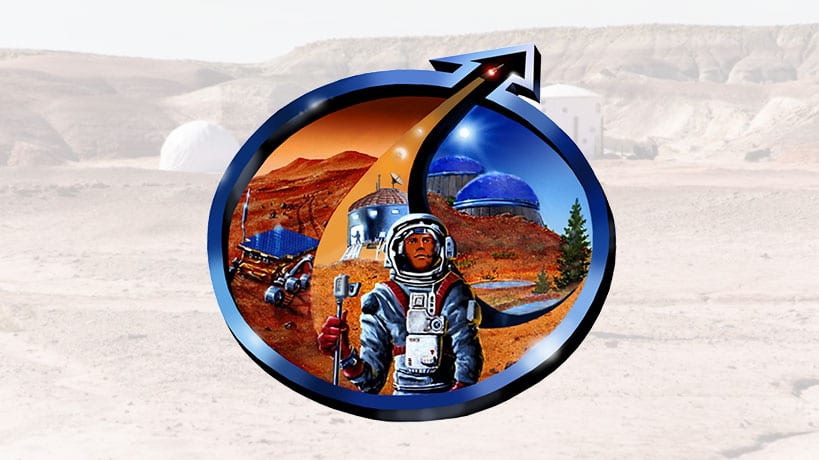
Radiation Hucksters Strike Again
By Dr. Robert Zubrin, Mars Society President, 06.08.17
According to a publicity campaign launched on behalf of a paper authored by University of Nevada Las Vegas Professor Frank Cucinotta, new  findings show “collateral damage from cosmic rays increases cancer risks for Mars astronauts.”
findings show “collateral damage from cosmic rays increases cancer risks for Mars astronauts.”
However an examination of the paper itself shows no discussion of experimental methods or results, because no experiments were done and no data was taken. Rather the much-ballyhooed paper is a discussion of a computer model that Prof. Cucinotta has created that claims to have the power to predict radiation-induced cancer occurrences. In short, there’s no real news. Furthermore, to the extent that the model in question has any empirical foundation, it is based on irrelevant prior experiments done in which researchers subjected mice to radiation dose rates millions of times greater than astronauts would receive on their way to Mars.
For example in one such illustrative piece of nonsense entitled “What happens to your brain on the way to Mars” published on May 2, 2015 in the open-access journal Science Advances, a group of radiation researchers claimed that their recent work causing memory loss to mice by administering very large doses of galactic cosmic ray (GCR)-like high energy radiation has serious implications for human Mars exploration. According to the authors, similar effects might severely impact astronauts going to Mars, thereby placing the feasibility of such enterprises in serious question.
However, in this typical mouse experiment, the victims were given a dose of 30 rads (0.3 Gray) at a rate of 100 rads per minute. On a Mars mission, astronauts would receive a dose of 1 rad per month during the 6 month outbound and return transfers, and about 0.5 rad per month during 18 months on Mars, for a total of 21 Rads. ( 1 Gray = 100 rads = 100 cGray. For GCR 1 Gray =6 Sieverts = 600 rem. Space dose rates can be found in “The Cosmic Ray Radiation Dose in Interplanetary Space – Present Day and Worst-Case Evaluations” R.A. Mewaldt, et al, 2005.
The 4-million fold difference in dose rate between such lab studies and spaceflight is of critical importance. It is a well-known finding of both chemical and radiation toxicology that the effects of large doses of toxins delivered suddenly is entirely different from the effect of the same amount of toxin delivered in very small amounts over a long period of time. The difference is that the body’s self-repair systems cannot deal with a sudden dose, that they can easily manage if received over an extended period. For example, if an individual were to drink one shot of vodka per second for 100 seconds, he would die. But if the same person drank one shot of vodka a month for 100 months, he would experience no ill effects at all. This is about the same ratio of dose rates as that which separates the invalid work reported in the “What happens to your brain on the way to Mars” paper (1.6 rad per second) from that which would be experienced by astronauts in space (1 rad per month).
It should also be added that mouse studies are not an accurate predictor of cancer occurrence in humans. It is possible to induce tumors in mice by rubbing their stomachs. Such treatment is not known to be a hazard to people.
It is true that small amounts of toxins received over a long period can statistically increase a person’s risk of ill effects – at least according to the hyper-conservative Linear-No Threshold (LNT) model of toxicology. However, we already have data that shows that the accumulation of slow rates of cosmic ray radiation received during long duration spaceflight is not a show stopper for human Mars exploration. GCR dose rates in low Earth orbit are about half those in interplanetary space. Thus there are a dozen cosmonauts and astronauts who have already received Mars mission equivalent GCR doses (Padalka, Malenchenko Avdeyev, Polyakov, Solovyov, Krikalyov, Titov, Manarov, Foale, Fincke, Pettit, Walz, Kelly, Whitson) during extended space missions without any radiological casualties. Furthermore, since the International Space Station (ISS) is continually manned, while Mars missions are only in space about 40 percent of their mission time, the total GCR dose (measured in person-rems) that the ISS program crews will receive over the next ten years of planned operations is about the same as would be received by a series of five crews of five people each if they were launched to Mars every other year over the same period. Thus, in fact the ISS program has already accepted the same level of GCR risk for its crews as would be faced by an ongoing human Mars exploration program.
Galactic cosmic radiation is not a show stopper for human Mars exploration and should not be used as an excuse for delay. The space program costs many billions of dollars, which are spent at a real cost to meeting human needs elsewhere. That fact imposes a moral obligation on the program to move forward as quickly and efficiently as possible. It is understandable that radiation researchers should want to justify their funding, but they should not spread misinformation to promote themselves at such extraordinary expense to the public.